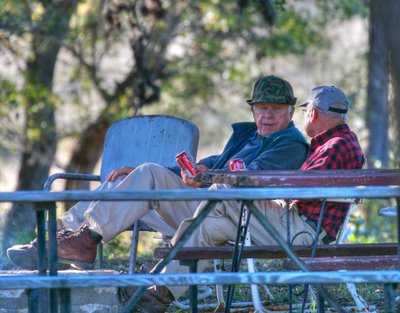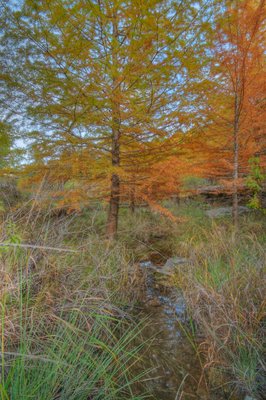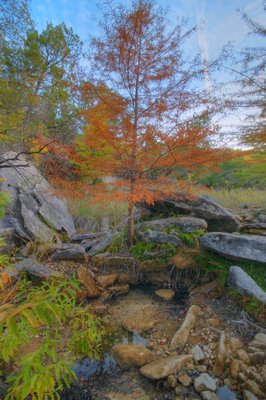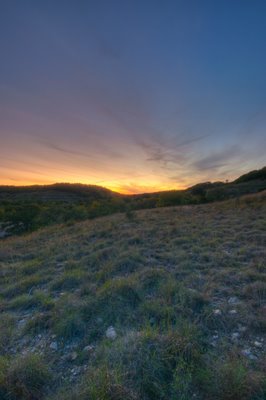From my most recent visit to the Bamberger Ranch: Above, real, wild turkeys. Below, J. David Bamberger and an old friend.
Thursday, November 23, 2006
Monday, November 20, 2006
Apple's Backup 3 - Hopeless Junk
What good is backup software that can't perform a restore? That's what I've been wondering in the week since the main hard drive in my PowerMac G5 died. Having lost another drive earlier in the year for which I had no backup, I'd finally setup a proper backup system, using external SATA drives as the destinations, and Apple's Backup version 3.1 (a part of the ".Mac" package) to perform nightly incremental backups. So, my latest drive failure seemed like one failure too many for the year, but one for which I was prepared. Or so I thought until I tried to restore my files. Then I found that Backup 3.1 would only restore a certain number of the files early in the backup set before it would crash. Any attempt to restore other files from the set resulted only in a crash. Specifically, Backup would proceed to very slowly consume about 2.1 GB of virtual memory, and then it would crash, writing the following to "backup.log":
Backup(1104,0x1ace800) malloc: *** vm_allocate(size=1069056) failed (error code=3) Backup(1104,0x1ace800) malloc: *** error: can't allocate region Backup(1104,0x1ace800) malloc: *** set a breakpoint in szone_error to debug
As best I can tell, this means that between the 2.1 GB of virtual memory it used-up (as observed in Activity Monitor), it also consumed a further 1.9 GB of combined real, private and shared memory, and then died because its 32-bit address space was exhausted. Brilliant. Thank you so much, Apple, for backup software that can backup, but not restore. That's innovative, alright, but not in a good way.
Needless to say, I submitted many crash reports, and a proper bug report, complete with a plea for help, but none has been offered in the following week.
I have, however, salvaged a fair number of files by manually mounting the ".sparseimage" files hidden inside the backup "files", but with seventy incrementals since the last full backup, sifting through everything by hand is a major problem. And files with resource forks, along with executables, can't be salvaged that way at all. Oh, thank you, Apple.
So, based on this experience, let me warn anyone else out there who's using Apple's Backup program: Don't. If your backup sets are small, it may well work for you, but once they grow large enough, you'll reach the same point I did, where it'll crash rather than restore your files. And you won't know that you've reached that point until it's too late.
S.M.A.R.T.?
As an aside, the drive that died (a 250 GB Maxtor that Apple sold me with the G5) had a controller that supports SMART (Self-Monitoring, Analysis and Reporting Technology), and I had installed the DiskWarrior extension that routinely checks the SMART status of the mounted drives and is supposed to display an alert when a drive reports that it is beginning to fail. No such warning appeared. This is the second SMART-equipped mechanism that I've lost (but the first since installing the DiskWarrior extension), and I haven't seen SMART do a thing. Has anyone out there actually seen SMART do its stuff?
Aperture Vaults
The one thing that did work well in this mess was the backup scheme ("vaults") that Apple's Aperture team integrated into that application. There was no problem restoring from the vault I'd created on one of my backup drives, and because support for vaults is well integrated into Aperture, I'd (1) actually setup a vault (the splash screen gently nags you to do so), and (2) kept it current. If any members of the Aperture team happen to read this, let me just say: Thank you. And please go beat the metaphorical crap out of whoever's responsible for the Backup application; they make everybody else at Apple look bad.
Sunday, November 5, 2006
Failure in a Creek
Last Friday afternoon I drove out to the Bamberger Ranch to lend Margaret a hand with her Macintosh, and to shoot some panoramas while the fall color was burning bright, and the valleys were still safely free of gunfire. Unfortunately, I didn't finish with the computer until the sun was well on its way to the horizon, so there wasn't a lot of time to find a good location and get my panoramic rig setup. After a quick consultation with David, I set off for the Louis Bromfield trail, which I was assured was especially worth seeing, and where he figured we'd cross paths later on, as he had some work to do down there.
Unfortunately, the first stretch of the trail was hard to distinguish from any of a dozen deer paths, and I headed off into the hills, squandering the rapidly diminishing light as I wandered in what eventually became exactly the wrong direction. When, at last, my mistake became completely obvious, I turned back and eventually intersected the Bromfield trail. It was a shame to lose that time, because the portion of the Bromfield trail that I did see was gorgeous: a creek running down a course cut through limestone, bordered by thick native grasses, and shaded by bald cypress trees in full fall color. Not that the shade was evident, however, because the sun had already settled behind a hill.
Cursing my timing, and daylight savings, I stopped at the first dense group of cypress trees, found my way down to the creek bottom, and hurriedly assembled my panoramic rig astride the creek. I thought I might still be able to shoot something useful, due to the reasonably bright sky, and the flexibility afforded by the High Dynamic Range (HDR) photographic technique I began using in August. It turns out I was right, but, as I learned tonight, in my rushed setup I ruined all of the panoramas I was about to shoot by botching the horizontal alignment of the camera; I read my setup notes correctly, but aligned the wrong bits to the diagrammed positions. Damn.
Lest the occasion be a total loss, I present here the best fragments of the ruined panoramas. The final one was actually shot after nightfall. I had already watched the sun set while I was still looking for a good vantage point. By the time I'd found one, parked my truck so it wouldn't appear in the would-be panorama, sprinted up a valley wall, and setup the camera, night had already fallen. The scene was rescued, if it was rescued, by using HDR to combine three exposures, the longest of which lasted 25 seconds.
I met up with the Bambergers afterward, and David pointed-out that I must have missed the Bromfield trail, because he'd ended-up working there, as expected, and hadn't come across me. I told my little tale of woe, while silently kicking myself for missing the opportunity to walk one of the most beautifully restored sections of that now famous ranch with the man responsible for it all. It's a lot like having missed a chance to walk with Aldo Leopold through his little piece of Wisconsin's sand counties, or with Bromfield through his pleasant valley. Damn, again.







